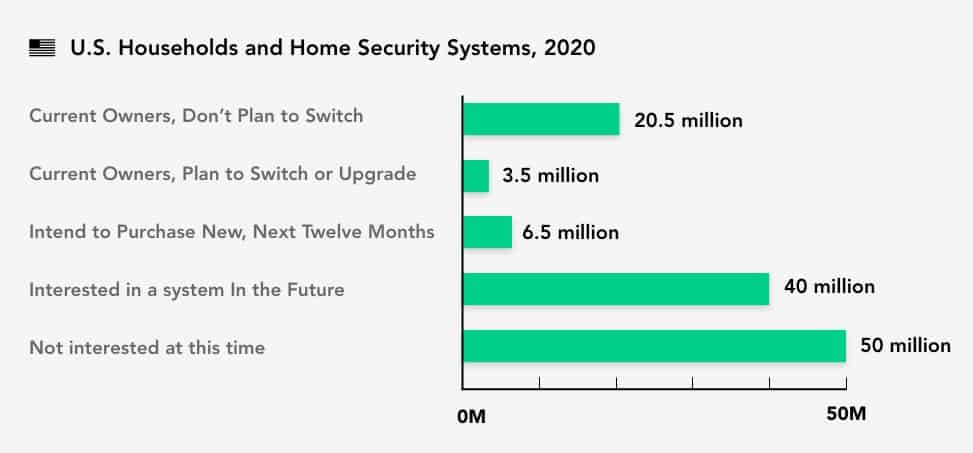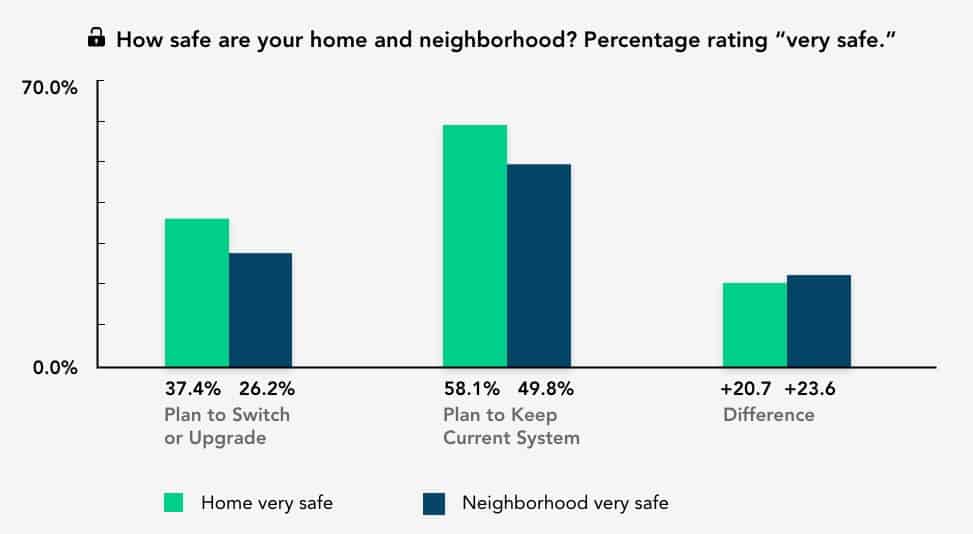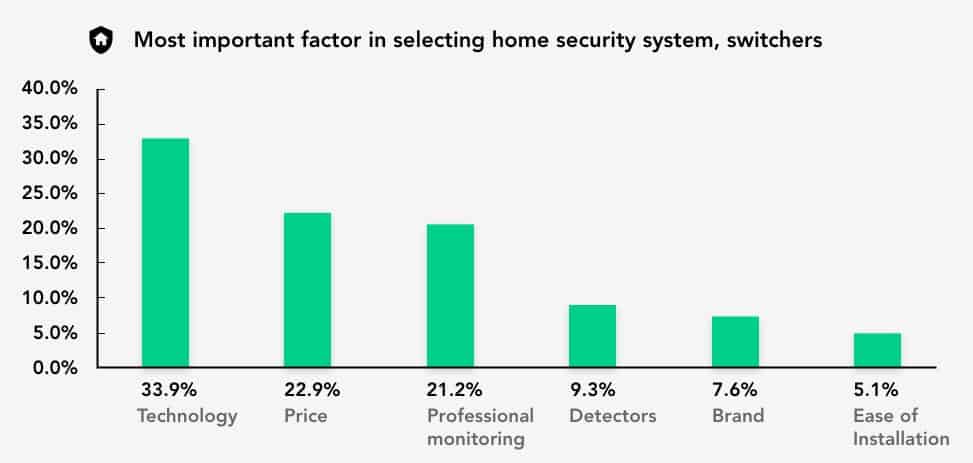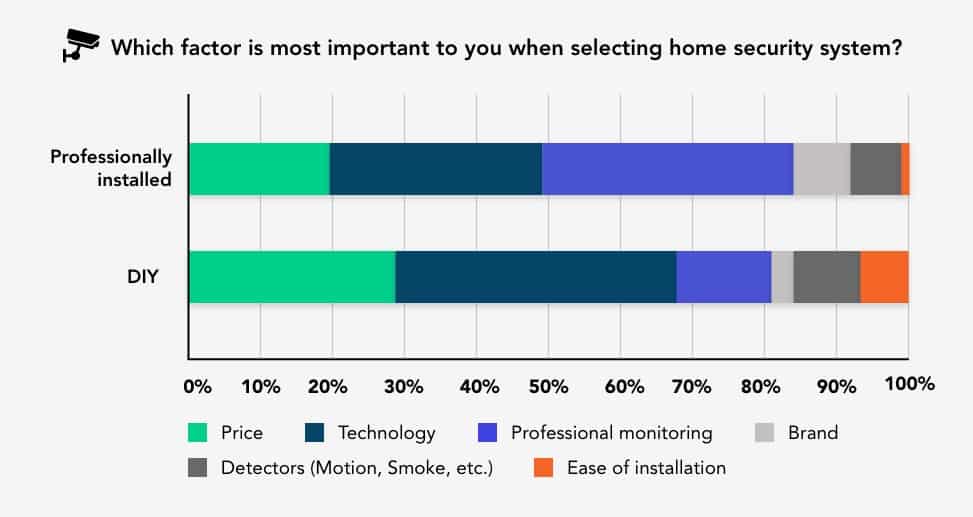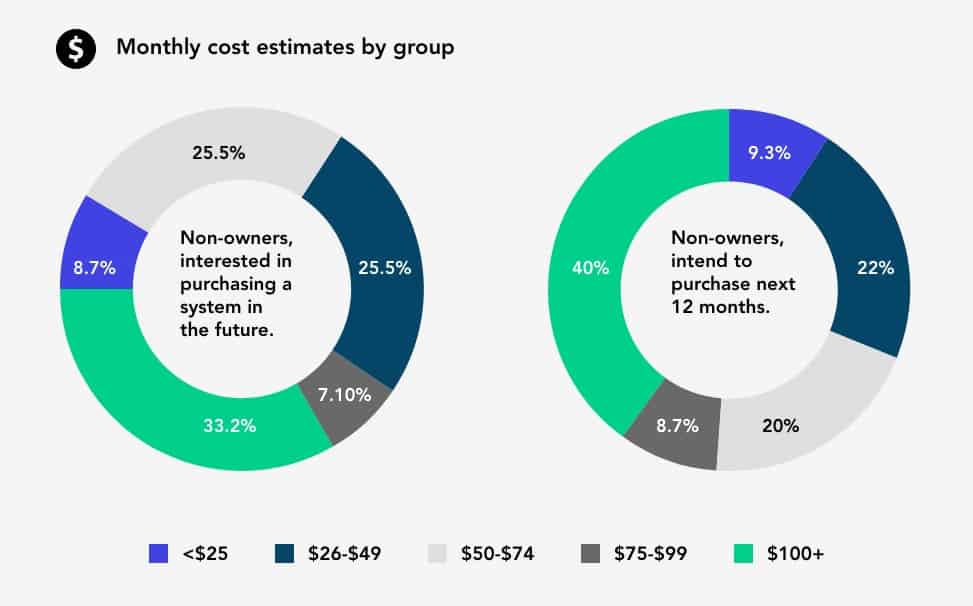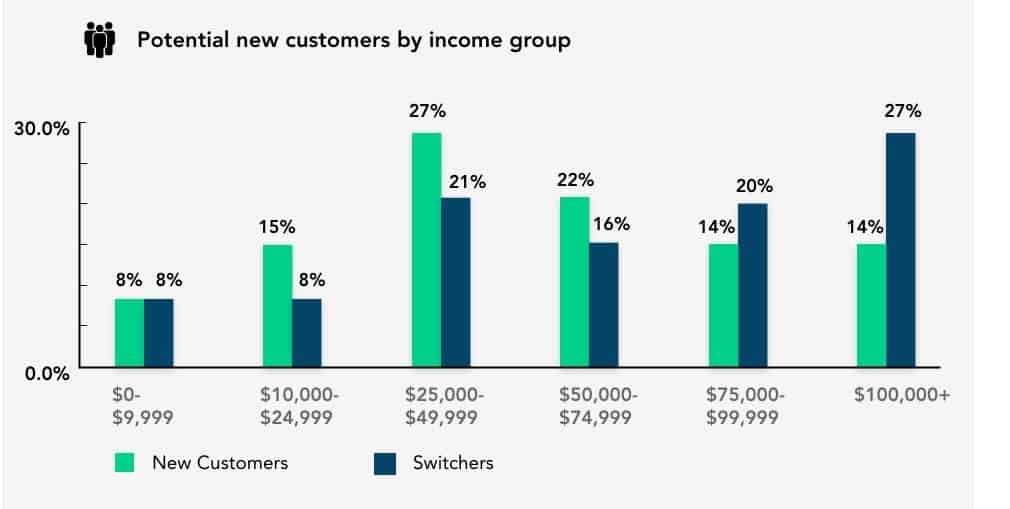The residential security marketplace is a crowded one in which consumer options run the gamut from fully DIY setups to professionally installed systems with active monitoring. Along with a steady stream of innovations, from doorbell cameras to facial recognition systems, the industry has also experienced significant growth in recent years. By 2023, 37 million U.S. households are expected to own a home security system, up from an estimated 24 million owners today.i
This research explores who is shopping for services, their motivations, misperceptions, and what it means to “feel safe” in America. Data for this study comes from three sources. First, we used anonymized shopping and geolocation data from more than six million home security shoppers over the past 12 months. Second, we asked 1,500 U.S. adults responsible for purchasing home services a series of questions to understand how they perceive their personal, home, and community safety as well as factors that may influence home services purchase decisions over the next year. Surveys were done across three waves in February, April, and May. Third, we analyzed publicly available law enforcement data we collected from January through April 2020.
Key Findings
- The industry is poised to grow significantly over the next year and at a faster pace than most industry projections. Ten million household decisionmakers intend to purchase a home security system in the next 12 months. This includes 6.5 million brand-new customers and 3.5 million that are interested in switching or upgrading their current systems.
- An additional 40 million households “might shop” for a home security system in the next twelve months. What separates the buyers from the browsers? It’s potentially a misperception about home security pricing. One-third of households believe that home security costs $100 or more per month.
- Home security is seen as an essential part of American homeownership. The majority of households intend to have a security system in the future and very few current owners have plans to cancel or remove a system.
- Switchers are higher-income households looking for the best technology. New buyers are much more likely to have household incomes of $75,000 or lower and are considerably more price-sensitive.
- So far, COVID-19 hasn’t impacted American's perception of safety, even as certain residential crimes have decreased in March and April. We asked consumers in February, and again in April, about how safe they felt at home or in their neighborhood. Answers were consistent across both survey waves.
- As of this writing, home security installations are continuing through COVID-19, and companies like ADT and Vivint are considered essential services in most states due to connecting consumers directly with fire and emergency services.ii
Table of Contents
Why Are 3.5 Million Americans Switching?
DIY vs. Professional Installation
Demographics of In-Market Buyers
Market Size
Ten million household decisionmakers are in the market for a new or upgraded home security system in the next 12 months, including 6.5 million new buyers and 3.5 million existing system owners. Forty million households are interested in a home security system, but don’t currently have plans to buy one in the next year.
Why Are 3.5 Million Households Switching?
For home security system owners intending to switch or upgrade, the primary motivation is better technology to improve safety, and not the cost of a system. Switchers are much less likely to call their home and neighborhood “very safe” compared to current owners who plan to keep their current system.
When asked about the reason for switching, switchers are less loyal to specific brands or ease of installation, while technology is the single most important aspect.
What these factors tell us is that the companies with the most success in luring existing users away from their current providers will be the ones who pack the most exciting technological features in their products, and cost, while an important part of the balancing act, is far less likely to be a deal-breaker for switchers.
Switchers: DIY vs. Professional Installation
So which products will switchers purchase? Home security companies are currently installing through COVID-19 as they are considered essential services by most states due to connecting consumers with emergency services. How current owners view their systems might provide the best indication of how consumers consider the home security landscape. Owners of Ring and other DIY systems say that “technology” is the most important factor in choosing a system, whereas owners of ADT and other professionally installed systems say that “professional monitoring” is the most important component. Once again, brands may have some work to do to show they are competitive in technology, monitoring, and price.
Price Perception and Shoppers
While more than 46 million households plan to have a home security system in the future, just 6.5 million of these plan to buy in the next 12 months. One of the reasons for this may be the perception of the costs of home security.
We estimate the average national monthly cost of a home security system at $50, but one-third of non-owners interested in a new system peg the average cost at double that — or even higher.
With more consumer education about less expensive systems, the industry may be able to spur quicker adoption.
Demographics of In-Market Buyers
Low- and moderate-income respondents account for a huge percentage of likely new customers, while high-income people are more likely to be switchers. Given what we know about switchers, which is that cost isn’t their biggest concern, it’s clear that security providers must remain mindful of price points for their products in the interest of newcomers to home security ownership, who tend to make less money than switchers.
The most likely age group to own a home security system is between 45 and 60, owning just over one-third of all systems owned in the United States.
Of the demographic distinctions that play into the likelihood of owning a home security system, homeownership was the single biggest driver, with more than 76 percent of current users reporting owning their home.
Home Security Shopper Outlook for 2020
Due to their role connecting consumers with emergency services, fire and police, most home security companies continue to ship products, install systems, and service systems during COVID-19. Our findings suggest that recent events have not dampened the huge growth expected in the U.S.iii
Our Data
Data for this study comes from three sources. First, we used anonymized shopping and geolocation data from more than six million home security shoppers over the past 12 months. Second, we asked 1,500 U.S. adults responsible for purchasing home services a series of questions to understand how they perceive their personal, home, and community safety as well as factors that may influence home services purchase decisions over the next year. Surveys were done across three waves in February, April and May. Third, we analyzed publicly available law enforcement data we collected from January through April 2020.
i https://www.statista.com/outlook/281/109/security/united-states
ii https://www.adt.com/coronavirus
iii https://www.marketsandmarkets.com/Market-Reports/home-security-system-market-205573901.html
